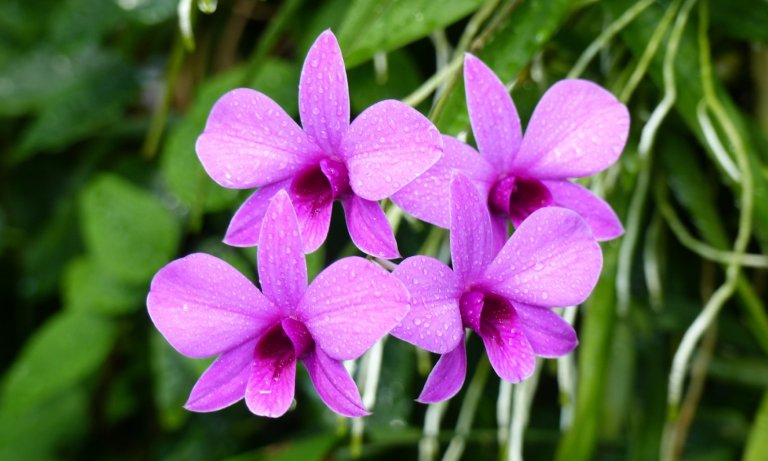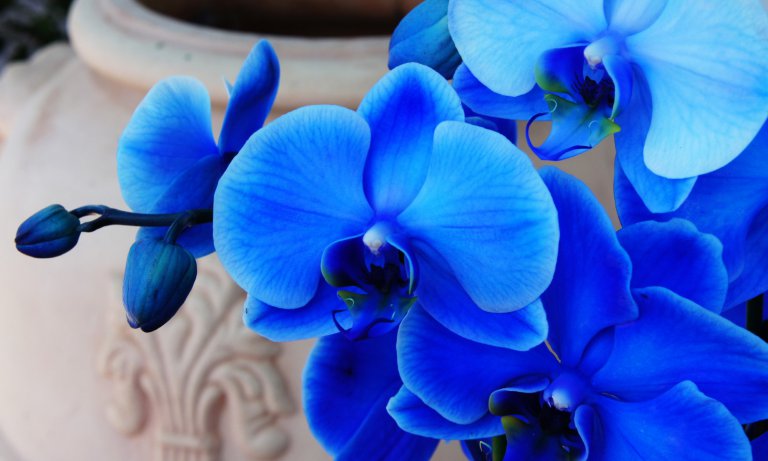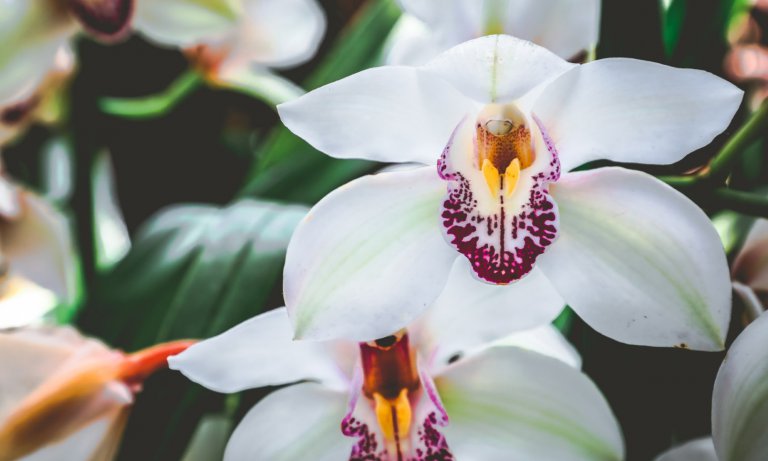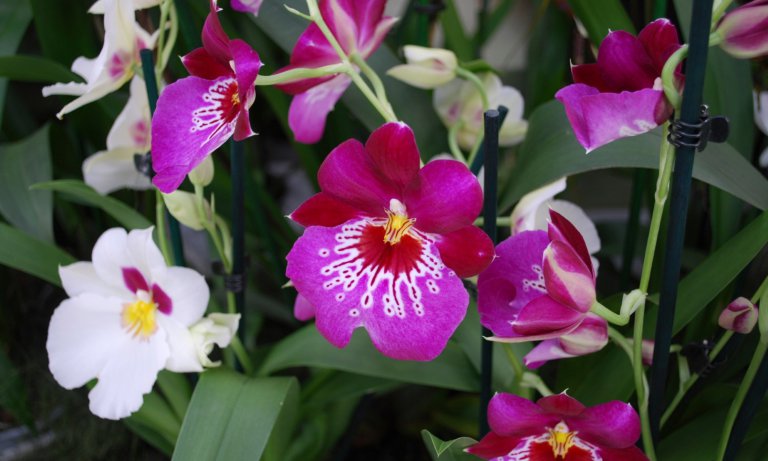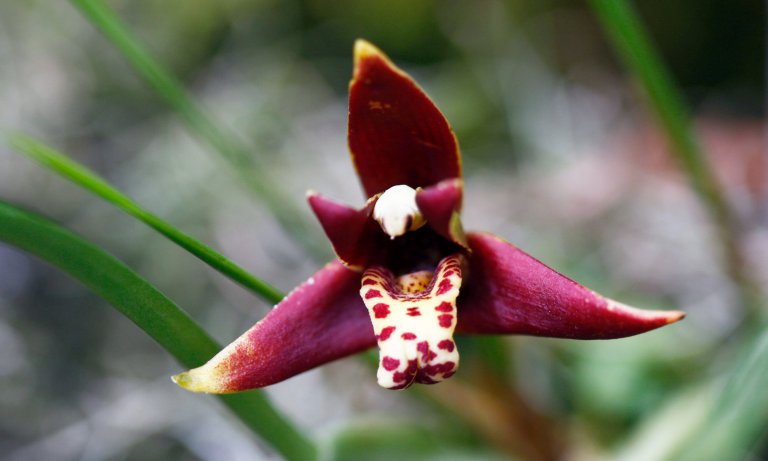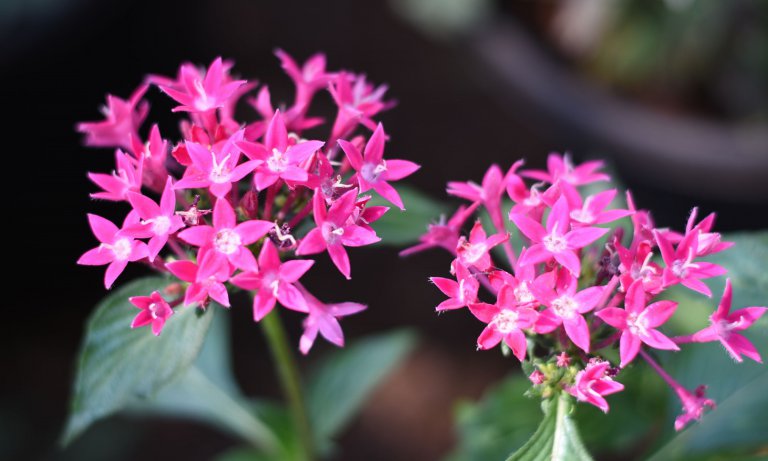Bulbophyllum orchids, also known as “Bulbos,” are the largest genus of orchids with more than 2000 species. They are named after their bulbous leaves and are known for having an incredible range of flower shapes and colors.
The bizarre species are considered to be excellent specimens for orchid collectors and flower enthusiasts around the world.
As always, let’s start by looking at the conditions in which they grow in the wild.
Natural Habitat
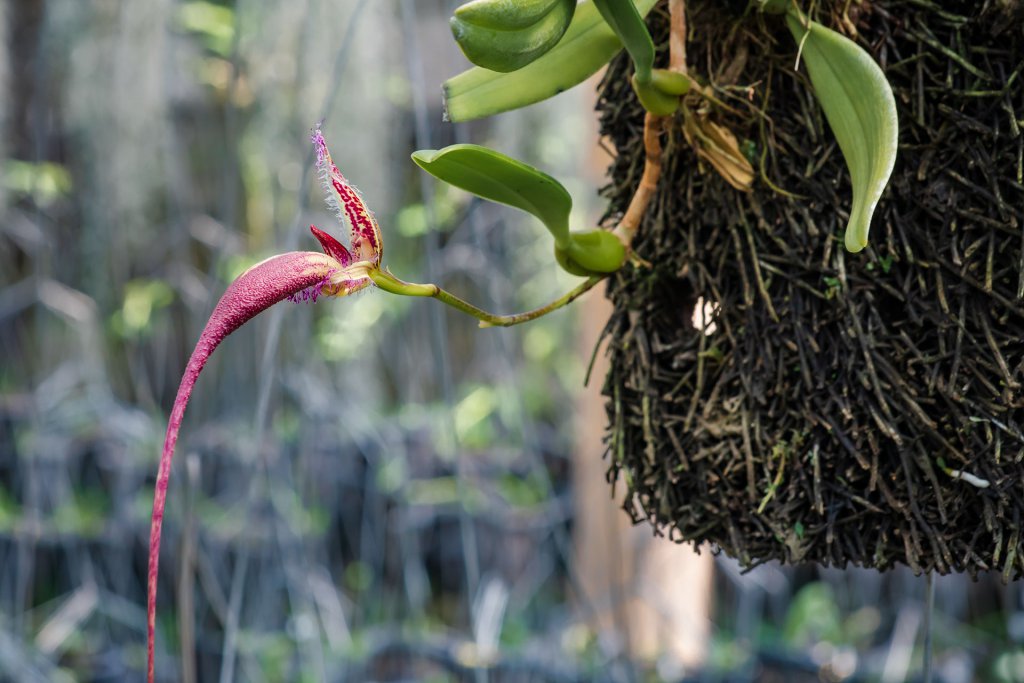
Bulbophyllums can usually be found in the warmer parts of the world, such as Thailand and Vietnam. Various species have adapted to grow on diverse habitats from high mountains to sea level.
Similar to the majority of other orchid types, Bulbos are epiphytic plants, which means they grow on the tree trunks in forests. In general, as most Bulbophyllum orchids come from the rainforests, they require high humidity and good air movement.
Bulbophyllums only thrive if the conditions they are cultivated in is similar to that of their natural habitat. This depends on the exact species.
How to Care for a Bulbophyllum Orchid
We can break this environment down into a few different aspects:
Light
Bulbophyllum orchids enjoy moderate to bright lighting, with the morning being the best time for receiving sunshine.
You should try to shield your plant from direct sunlight around midday when the sun is too intense. This is not necessary on cloudy days and after 3pm.
Depending on the species, Bulbos can tolerate lower light conditions. However, you will see less flowering if that is the case.
Temperature
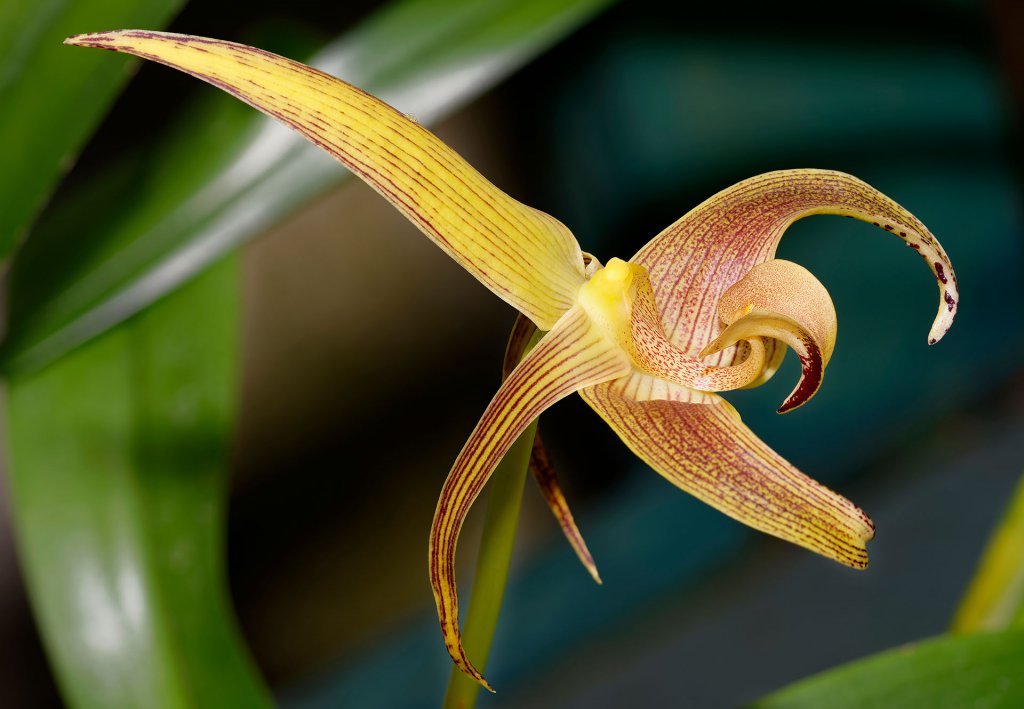
Finding the right temperature is probably the trickiest part for growers of Bulbos. Most species like intermediate to warm temperatures.
However, due to their ability to grow in diverse habitats, you should check specific instructions for the species you are trying to grow. You can use the website orchidspecies.com to check the climate characteristics for your particular plant.
Species that grow in high altitudes require temperatures around 60 F. Those that grow near the equator and prefer a hot climate, like Bulbophyllum cumingii, tend to thrive if kept at about 75F to 85F.
Regardless of the species, avoid placing your orchid near any cold draft of air, as this will soon damage your plant.
Humidity
Almost all species of Bulbophyllum like to stay in a high humidity environment, and the general recommendation is that humidity should be around 60%. However, many growers have found that their Bulbos seem to tolerate humidity as low as 18%.
The trick is to maintain frequent watering of the plant and to pot the orchid in a high water retention medium.
Watering
Bulbophyllums have fine root systems that generally require moisture at all times.
These orchids need frequent watering, although you should adjust watering if the species you are growing comes from regions that have dry periods. You should normally water a potted Bulbophyllum several times a week, and mounted ones daily.
If you have planted your Bulbophyllum in bark, it will need more frequent watering, as bark tends to dry faster. On the flip side, if you have planted your orchid in moss mix, check that the moss has just dried, before watering it again.
To initiate flowering, some types of Bulbophyllum require a period of drought. Remember that these are epiphytic plants, and they have adapted to drought between the rainfalls.
Potting Mix & Pot

[Photo by ivan.danou]
The best potting mixes for Bulbophyllum orchids include bark, perlite, coir (coconut fiber), and sphagnum moss. You can also use combinations of these, sometimes with an additional bottom layer of charcoal.
When choosing the potting mix for your orchid, you should keep in mind that the roots prefer to be moist. If you live in a country with mild summer temperatures, fine bark may be the best medium for your Bulbophyllum orchid. In contrast, medium-sized orchid mix works best if you live in a country with hot summer months.
If you are interested in creating a beautiful mounted display with your Bulbo, you can use tree fern, cork, or Styrofoam. As many orchids are epiphytic, mounting is a much-preferred cultivation method for certain species.
Most Bulbophyllums have small roots, and you should plant them in a shallow pot, if not mounted. Some species have very long rhizomes, and potting will depend on that.
Repotting
As an epiphytic plant in their natural habitat, Bulbos have an extensively developed system of very fine roots. If you repot the orchid without proper care, you can easily damage their delicate root system.
Repotting is not generally recommended. However, if you need to, repot your Bulbophyllum every two to three years between August and January.
You can check out our repotting guide for step-by-step instructions.
Blooms
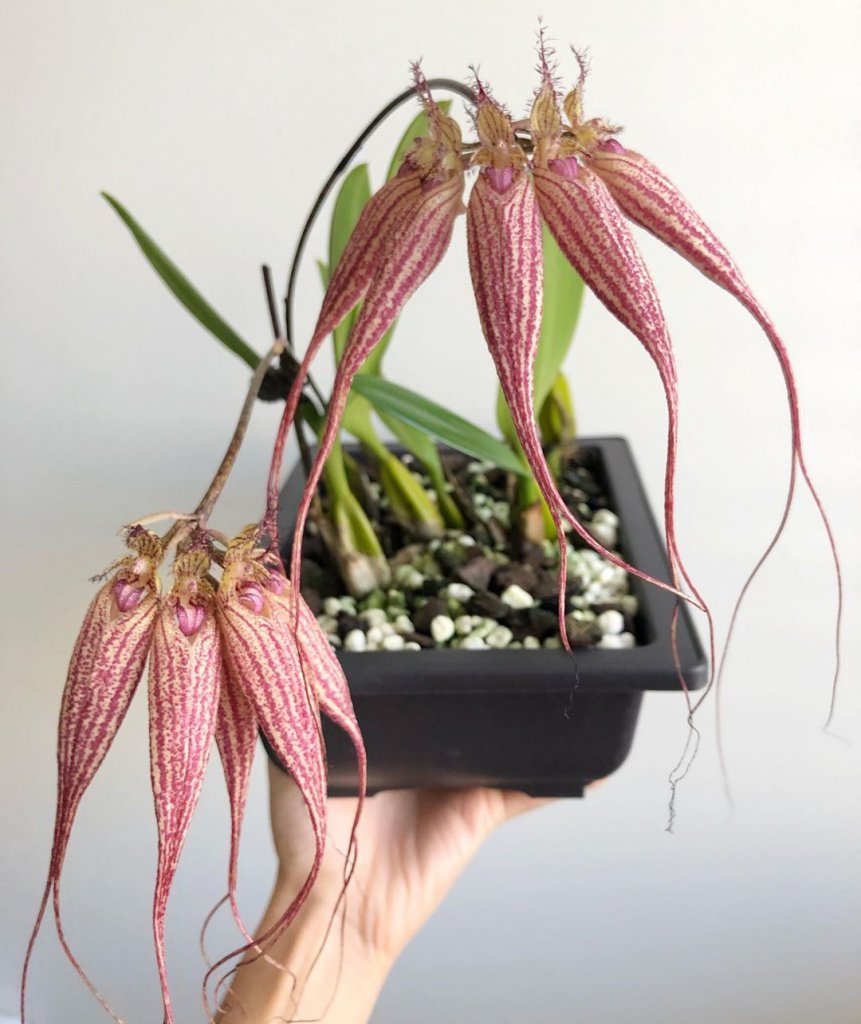
[Photo by so0tie]
The good news about these orchids is that they generally bloom throughout the year, with one of two more showy and major blooms. Once the flowers appear, they tend to last between one and six weeks, depending on the species.
If you don’t see blooming occurring for some time, the trick is to move your orchid to a brighter place or suspend watering for a bit, depending on the orchid type.
Fertilizer
Bulbophyllums enjoy regular, slow-release fertilizers, particularly during the summer months. Between August and January, the best type of fertilizer is rich in nitrogen, while phosphorus-rich fertilizers are best during late summer and autumn.
You can use a quarter strength fertilizer once a week during summer, and you can use a spray fertilizer occasionally. During winter, add fertilizer roughly once a month.
Bulbophyllum Care Summary & Cheat Sheet
Here’s a brief summary of what we just learned:
| Light | Moderate to bright |
| Temperature | Warm, minimum 65F at night for most species |
| Humidity | High, around 60% but can be lower with frequent watering |
| Watering | Frequent, multiple times a week |
| Potting Mix | Fine bark, sphagnum moss |
| Pot | Mounting preferred, otherwise shallow pots |
| Repotting | Not recommended Repot between August and January if required |
| Blooms | Throughout the year, one or two major blooms |
| Fertilizer | Regular slow-release fertilizer More often during summer months |
If you’d like to download this as a handy cheat sheet, right-click the image below and select “Save Image”:
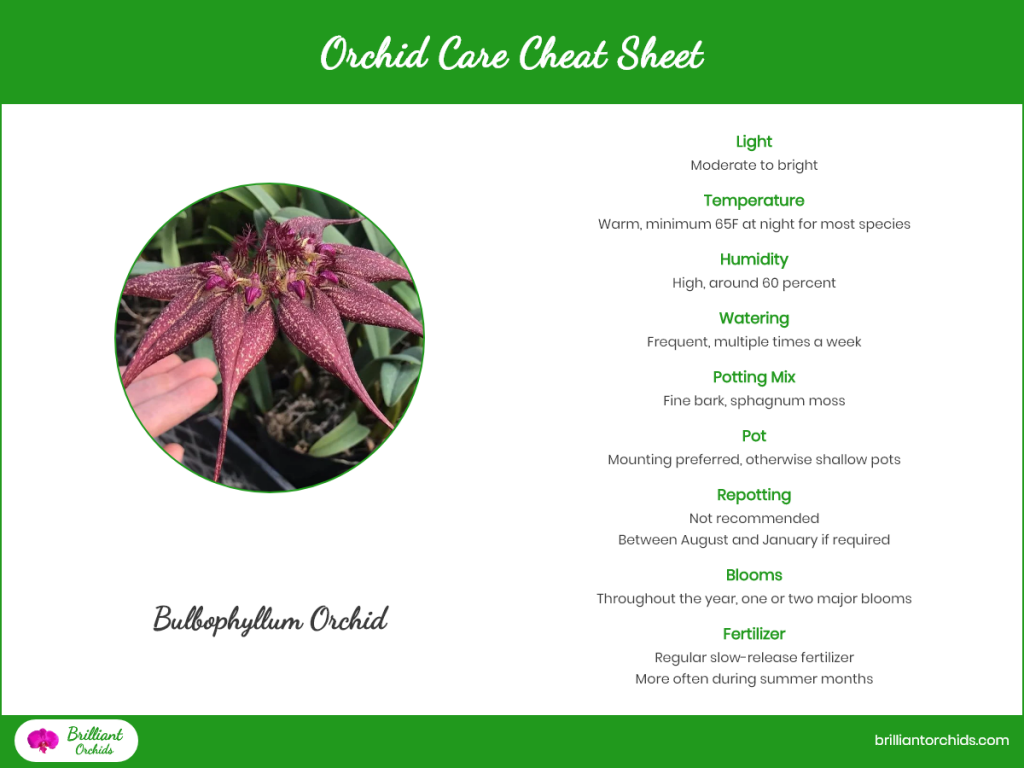
We recommend printing it off and keeping it by your orchid. Please share it if you find it useful!
Frequently Asked Questions
Here are some common questions people have about these weird and wonderful orchids:
My Bulbophyllum Orchid Smells Bad, Is This Normal?
The flowers of the Bulbophyllum orchid are known for sometimes producing unpleasant smells to attract pollinators. Some notorious smells are those of rotten meat or garbage!
There is nothing wrong with your plant if you notice this, and hopefully, the smell will not discourage you from looking after your plant.
What Are Some Bizarre Bulbophyllums That I Can Grow?
Bulbophyllum medusae, also known as Medusa orchid, is named after the Greek mythology female character Medusa. The appearance of this orchid’s flower, with long thin sepals, resembles the snakes on Medusa’s heads.
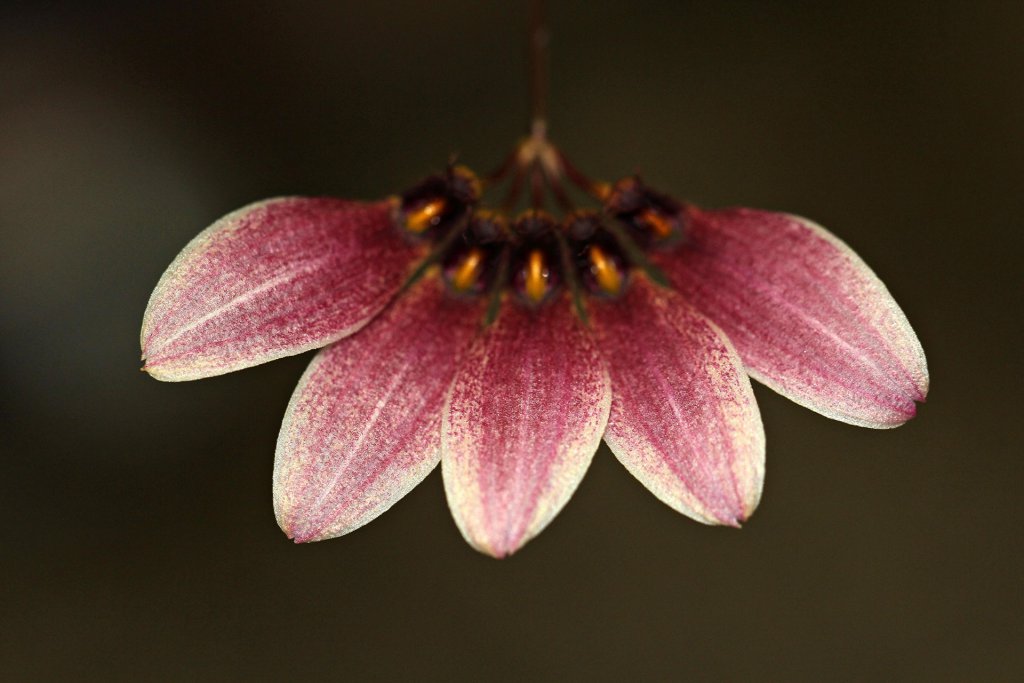
Bulbophyllum echinolabium is a common Bulbo for first-time growers. It has a very distinctive flower shape with very elongated bottom petals and a sharp orange tip.
Bulbophyllum longissimum is an exotic orchid originally from Thailand, with a semi-circular flower arrangement and long shiny leaves. The inflorescences extend from the plant, which makes the flowers look like they are floating.
The Cirrhopetalum Elisabeth Ann’ Buckleberry’, which is a hybrid of the Bulbophyllum longissimum and Cirrhopetalum longissimum, is another amazing specimen plant.
How Do I Get Rid of Fungus on My Bulbophyllum Orchid?
Because of the high humidity that Bulbos prefer, they are often very susceptible to fungus. Use a fungicide spray every month on your plant, particularly during the warm summer months.
Ensure you keep your plant in a well-ventilated space as poor ventilation can contribute to fungus growth.
Did we miss anything? Do you have any care tips for these crazy orchids? Let us know in the comments below!


